Do you want to give your go-to recipes a touch of color and elegance? Incorporate these delightful edible flowers as embellishments and highlights, and astound your dinner companions on every occasion!
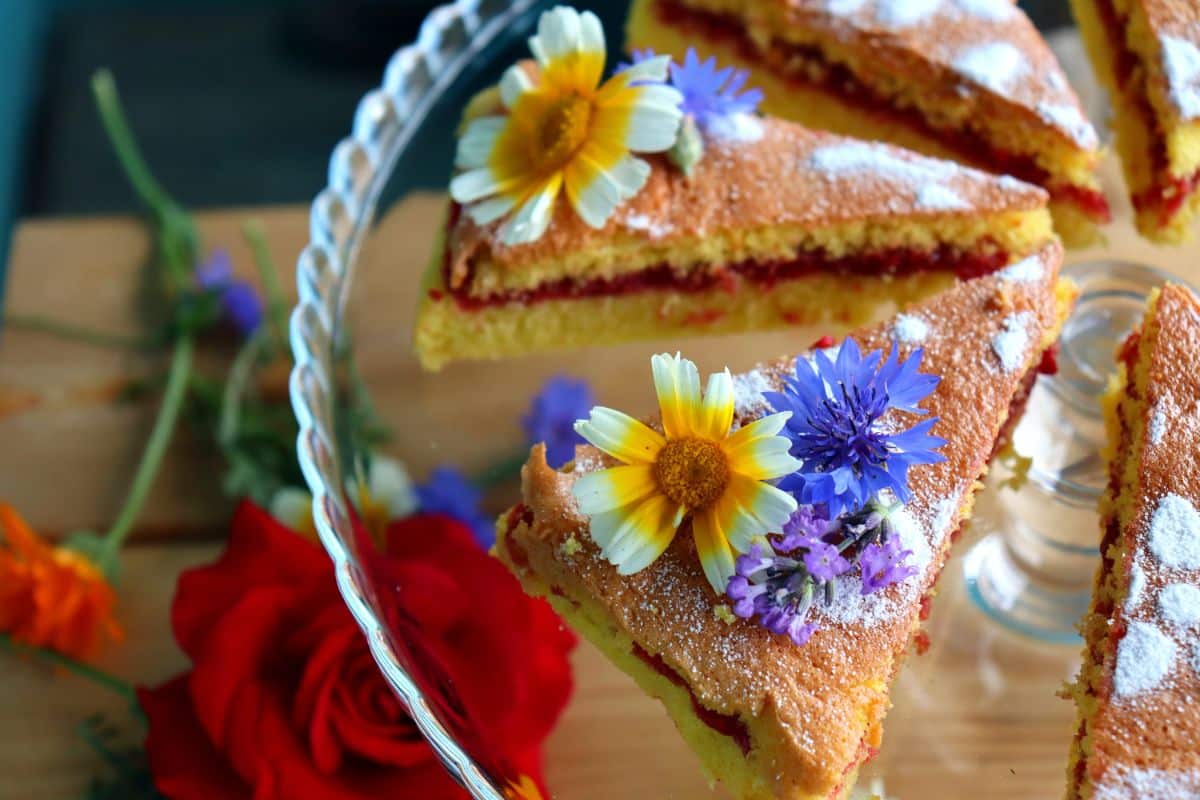
Edible flowers have yet to be fully appreciated as a garden product. Fortunately, you may already have some of these edible varieties growing in your garden! These flowers make for creative salad toppers and garnishes. The list of edible flowers includes borage, bachelor buttons, nasturtium, squash, violets, English lavender, calendula, rose, thyme, radishes, mint, chamomile, arugula, pineapple sage, lovage, pansies, dandelions, hibiscus, marigolds, daylilies, red clover, and sunflowers. If you are curious about these flowers, check out the FAQs section or the summary for a quick overview.
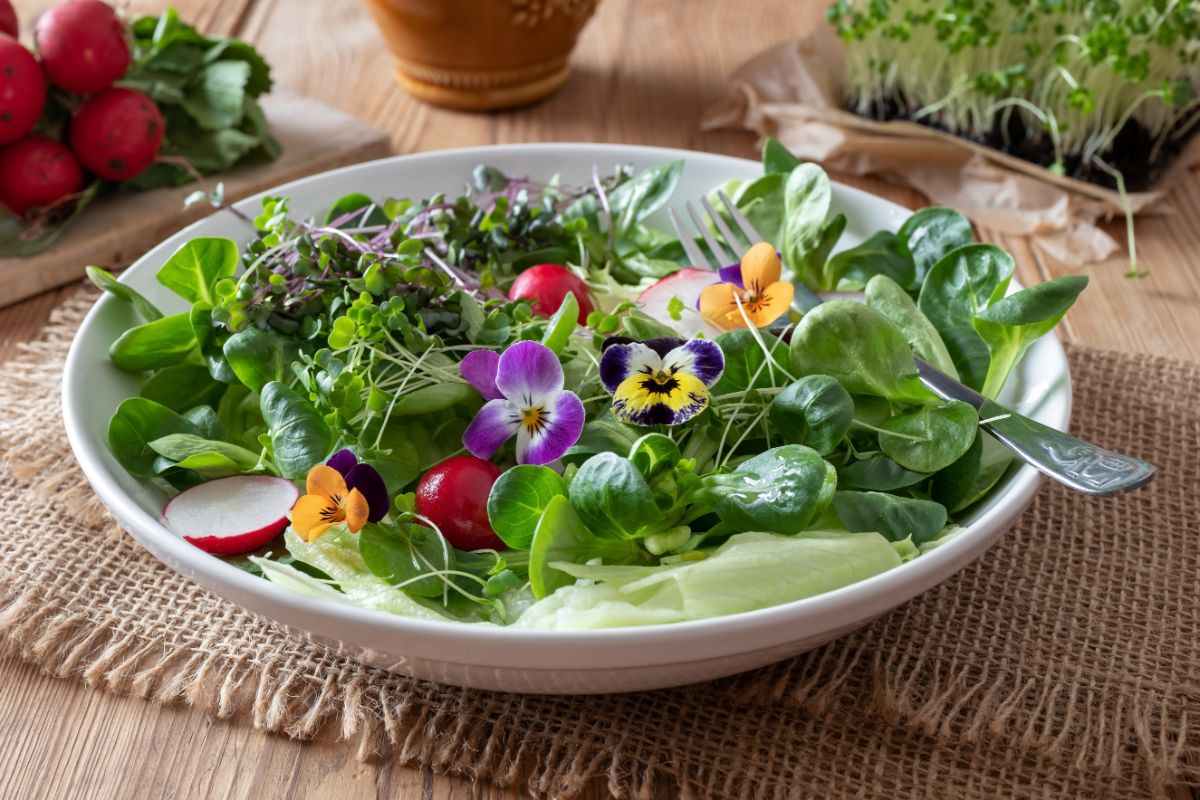
The kitchen is full of possibilities when it comes to using edible flowers. You can add them to cookies, steep them in tea, or sprinkle them on top of dishes to enhance their appeal and interest. We have compiled a list of the most popular and effortless-to-cultivate edible flowers and some ideas on how to incorporate them into your meals! First on the list is borage (Borago officinalis).
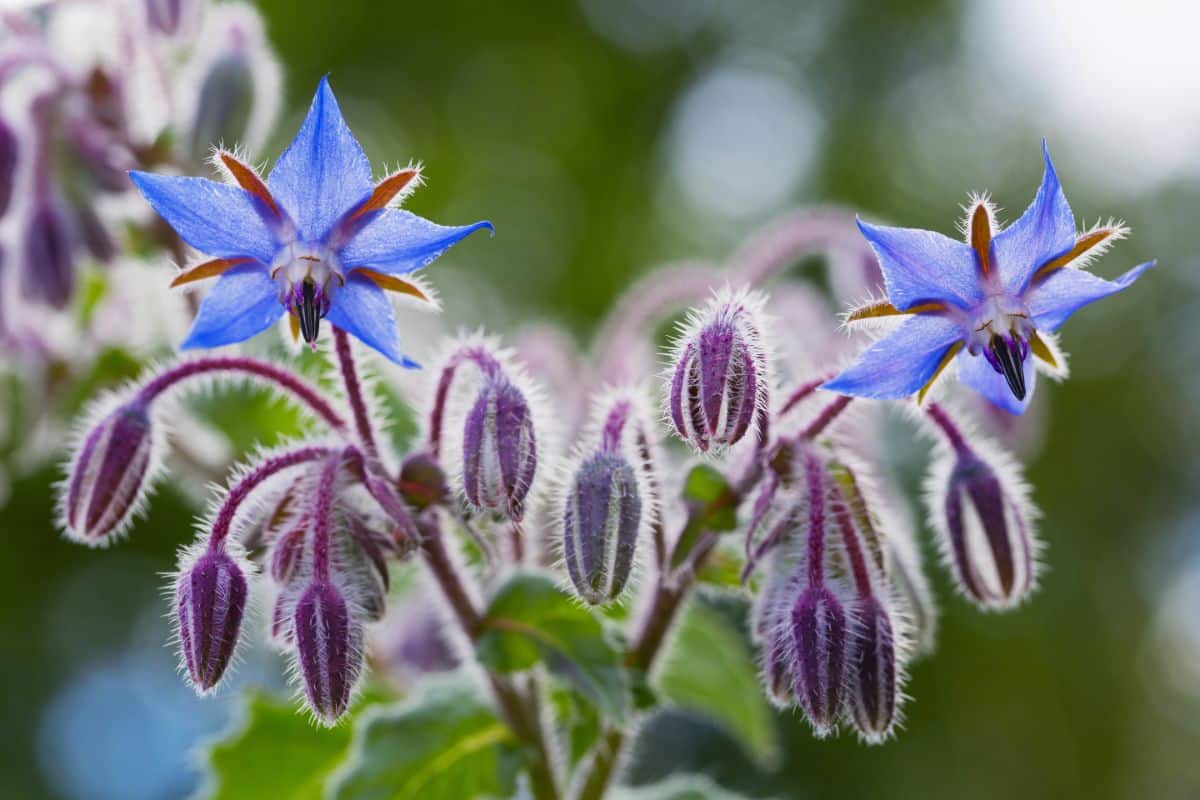
Borage is a versatile plant that adds a delightful cucumber taste to salads, drinks, and other dishes. With a preference for full sun to part shade and moderate watering needs, borage can easily be grown from seed in zones 3 to 10. This unassuming yet vibrant plant is often included in edible flower seed mixes but can also be purchased separately. Its star-shaped flowers boast a stunning periwinkle blue hue that’s perfect for adding a pop of color to your garden salads or frozen in ice cubes for a refreshing drink. Borage is a plant that’s often overlooked, but it has many uses in the kitchen and garden. The leaves are edible and offer a cucumber-like flavor, while the plant itself serves as a valuable companion for repelling tomato hornworms and attracting pollinators.
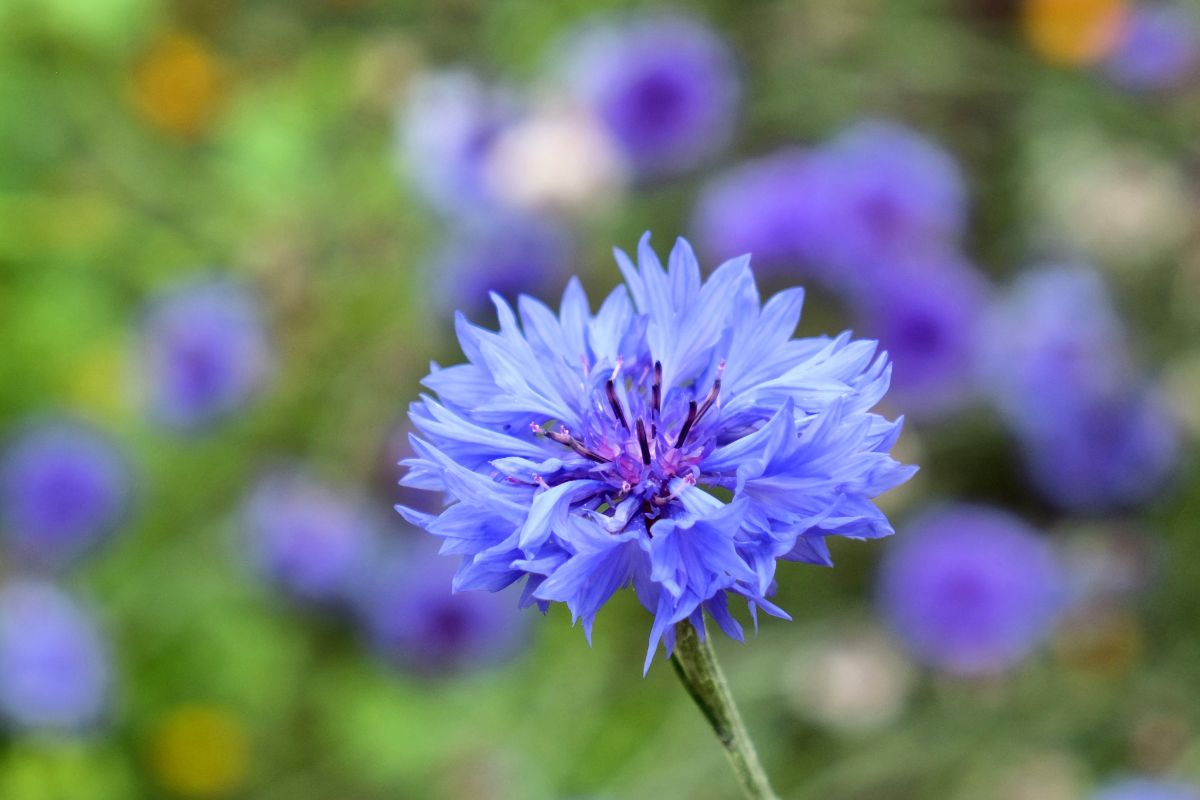
Bachelor buttons, also known as cornflowers, are often grown for their ornamental purposes or for cutting, but they have various uses and can be eaten as well! These plants, which require full sun and moderate watering, are typically grown from seed and can be planted in zones 2 to 11. With their vibrant blue flowers, bachelor buttons have inspired paint colors, crayon hues, and other products. In addition to their aesthetic appeal, the flowers of bachelor buttons can be added to salads to provide a pop of saturated color, brewed into herbal teas, and used for homemade textile dyes. Although native to Europe, bachelor buttons are easy to cultivate elsewhere. However, as true annuals, they will need to be replanted every year unless allowed to go to seed.
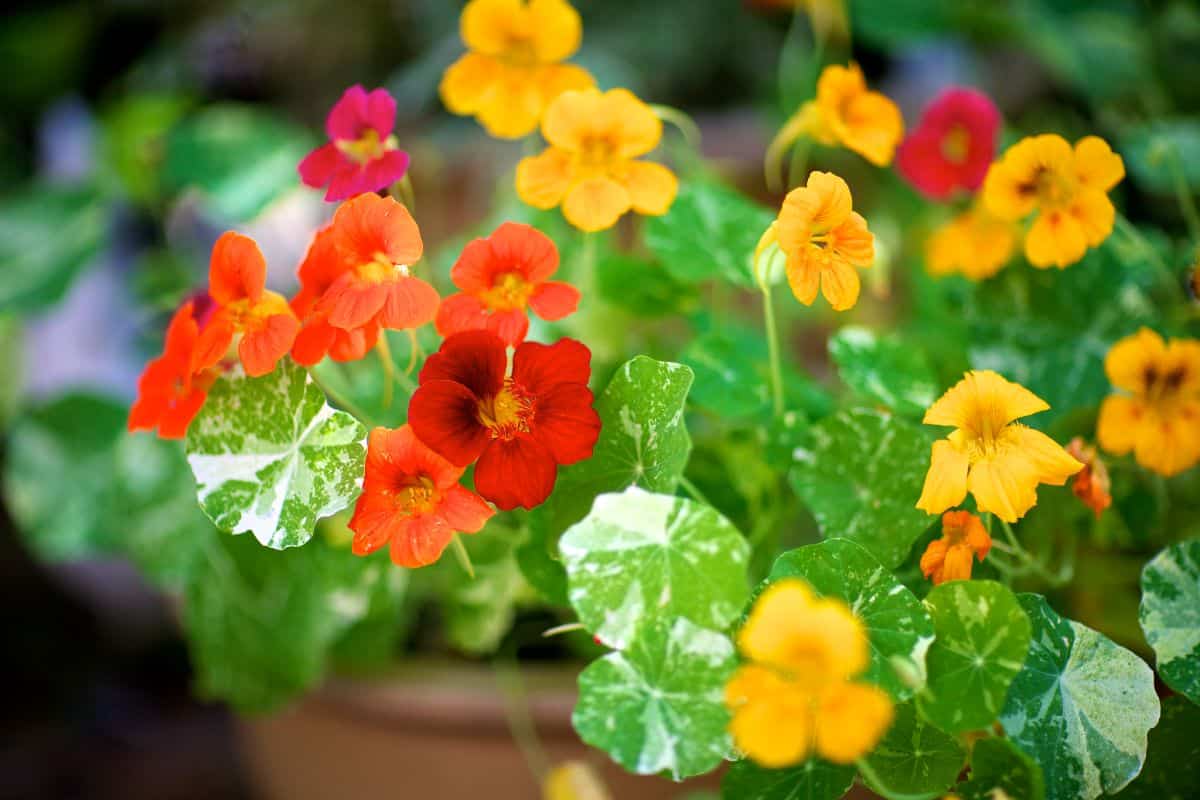
Nasturtium flowers are not only beautiful, but they also serve as fantastic companion plants and can be eaten. These plants prefer full sun and moderate watering, and are most commonly grown from seed. They typically flourish in zones 9 to 11, but can be grown as annuals in cooler regions. While nasturtiums are often used as salad greens or ornamental plants, their bright, orange-to-yellow flowers are also edible. The plants come in mounding and trailing varieties, making them suitable for small gardens or for use as climbing plants. In addition to their aesthetic value, nasturtiums have a strong scent that repels certain insects while attracting others. As a result, they are one of the best natural pest control and pollinator-boosting companion plants for vegetable gardens. Finally, nasturtium seeds can be pickled to make a delicious caper-like condiment.
Next on our list is squash (Cucurbita spp.).
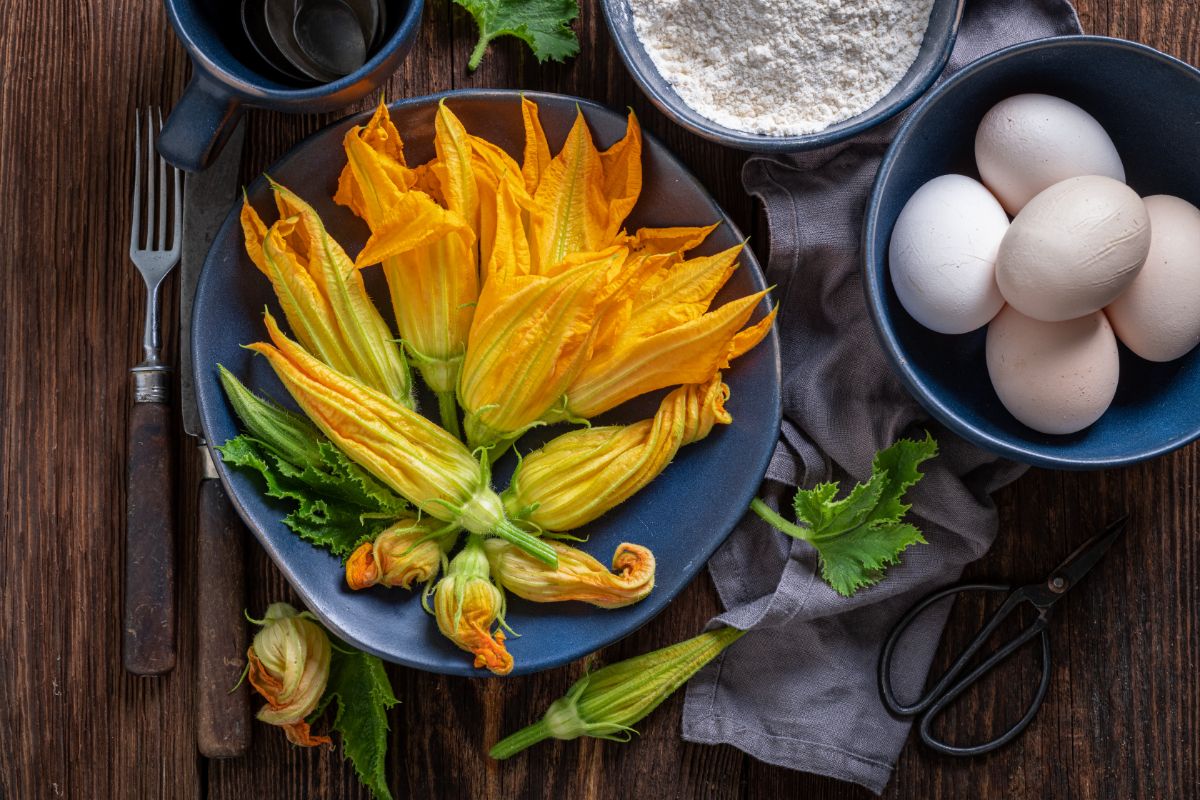
For many years, squash blossoms have been a staple in traditional Italian cuisine. These delicate flowers are harvested from the squash plant, which requires full sun and moderate watering. The most common planting method is through seeds, and they can grow in zones 3 to 10. Squash blossoms are famously used as an edible flower and are often stuffed with ricotta cheese and fried to make a savory appetizer. However, they can also be served in various ways, including raw in salads or as a garnish. It’s recommended to pick squash blossoms in the early morning before the sun is high overhead, with male flowers being the best option as they don’t produce squash. Violets (Viola sororia) are another type of edible flower that can add color and flavor to dishes.
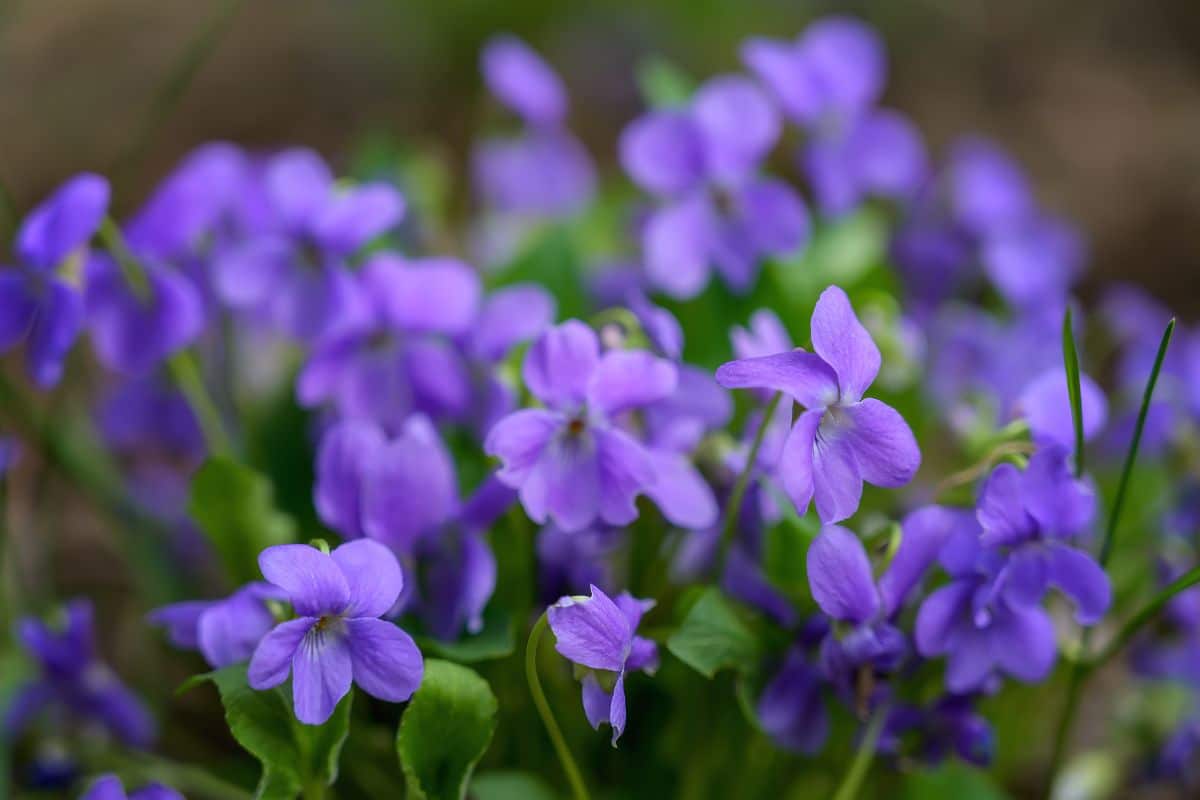
Violets are not only pretty additions to salads, but they can also be used to create flavorful vinegar dressings. These plants require moderate watering and can thrive in full sun to part shade. While all wild violets can be eaten, common blue violets are favored for their taste. Many consider violets to be nuisance weeds, but their charming appearance and bright colors make them a great choice for edible flower dishes. You can find purple, blue, or white small and delicate flowers with a slightly nutty flavor. When harvesting wild violets, be sure to avoid areas that have been treated with pesticides or herbicides. Alternatively, you can intentionally grow wild violets in your edible garden for easy access to these delightful flowers for salads and more! Another popular plant to consider growing is English Lavender (Lavandula angustifolia).
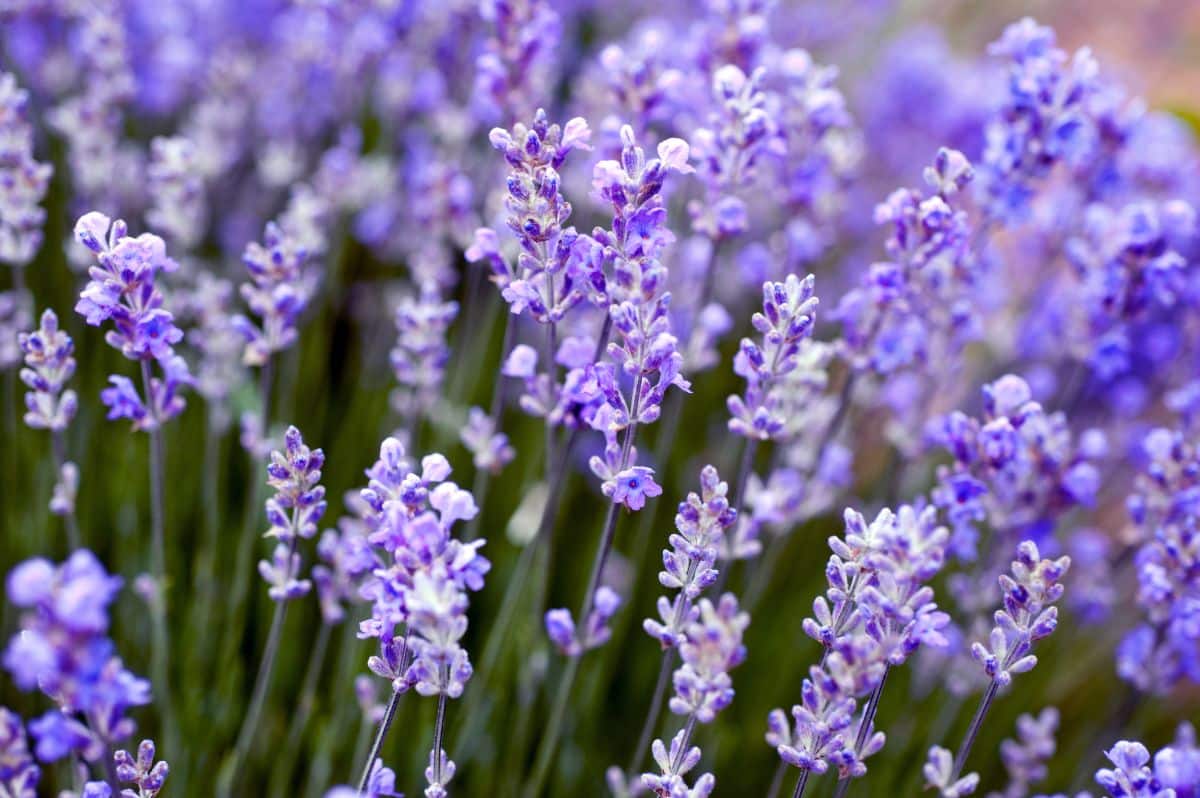
The English lavender plant is a versatile herb that has several culinary uses, including the infusion of drinks. It requires full sun but low water and can be grown from nursery starts or cuttings in Zones 5 to 9. Unlike other lavenders grown for ornamental purposes, English lavender is the go-to variety for cooking. Its flowers and leaves are edible and can be utilized as a garnish, herbal tea, or even to flavor meat and vegetable dishes. You don’t need a huge garden to grow lavender as it can thrive in containers. However, it’s important to ensure the plant is not grown in wet soil to prevent root rot. English lavender also benefits from annual pruning to keep its stems from becoming woody or leggy.
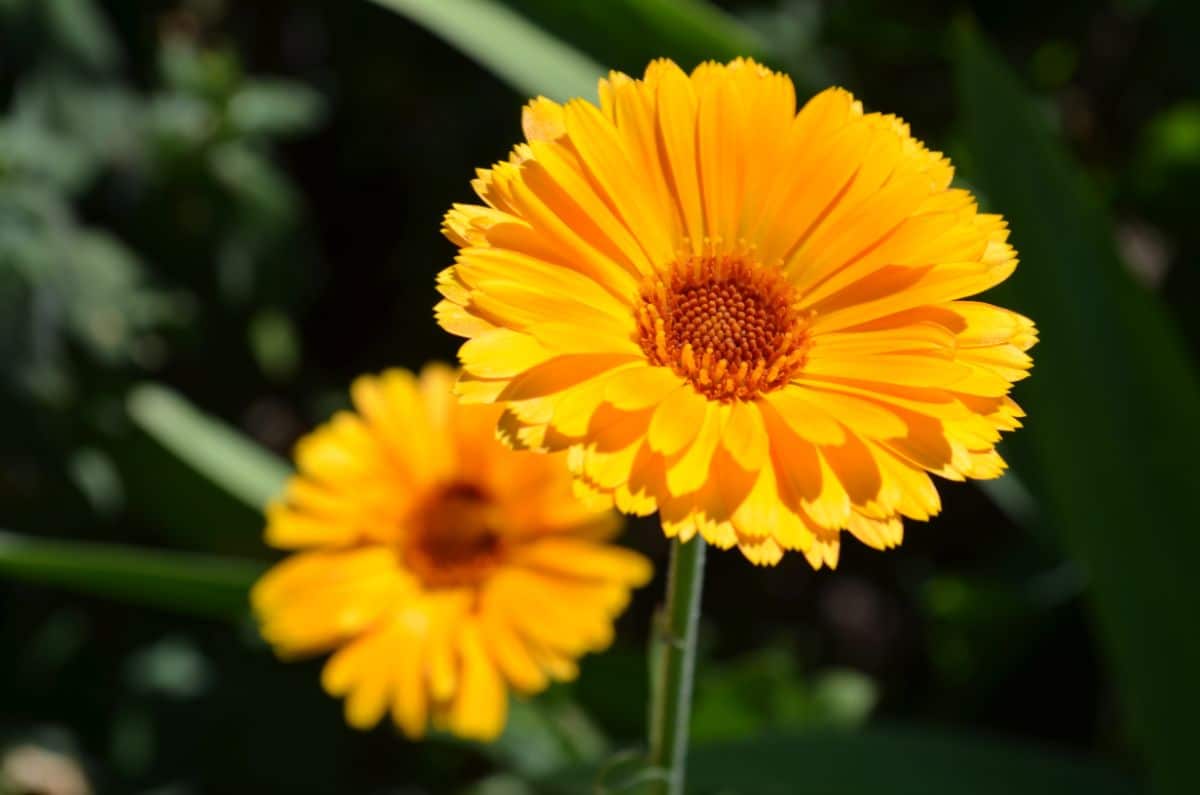
The taste of calendula leaves is stronger compared to the mild flavor of its blossoms. This plant, also known as pot marigold, requires full sun to partial shade and moderate watering. Calendula is commonly planted through seeds and can be grown in zones 9 to 11 as an annual in cooler areas. Although it is known for its medicinal uses, calendula’s daisy-like flowers can also serve as a decorative garnish and can be used in pastries and sweet treats. The flower colors range from vivid yellow to orange, as well as white and bi-colored varieties. While these plants are sold at plant nurseries, they can also grow easily from seed. In warmer regions, calendula can thrive as a perennial but is generally grown as an annual in zones 2 through 8. Another plant that deserves attention is the Rose (Rosa spp.).
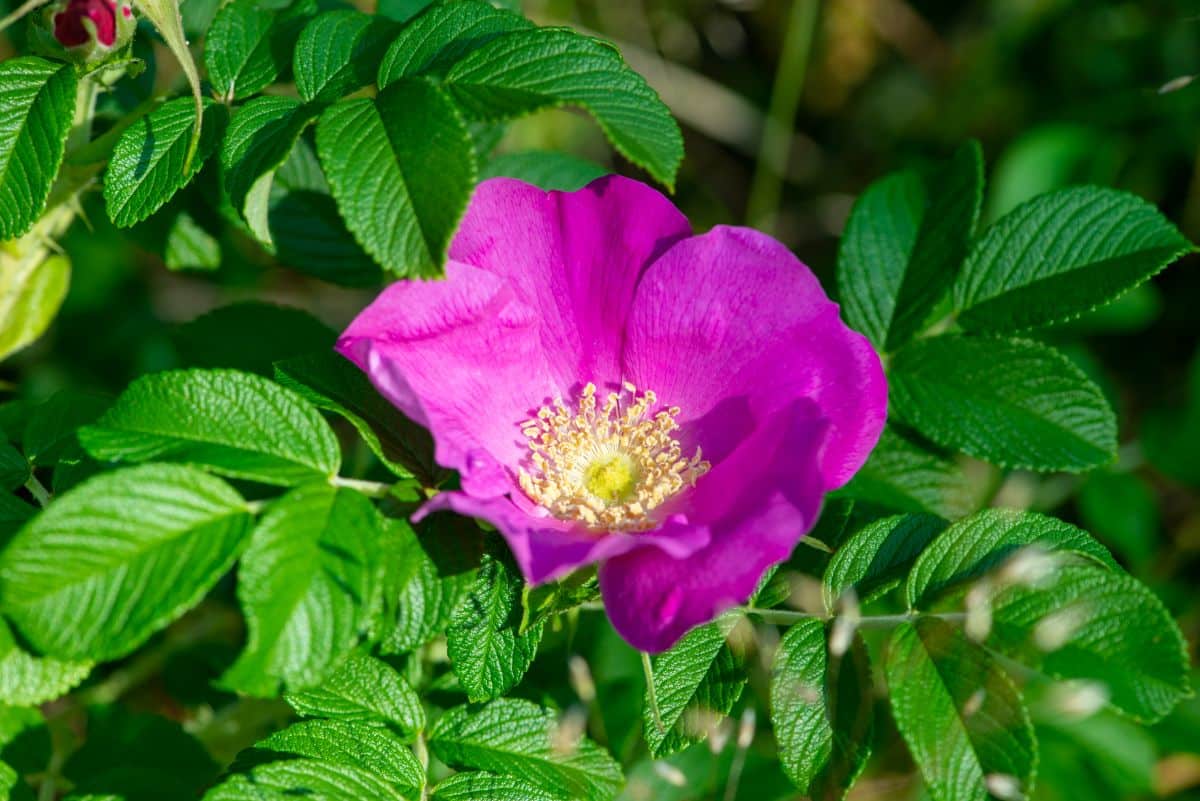
The versatile rose has more uses than just being a pretty flower. It can be used to add flavor and decoration to salads, cakes, tea, and even jelly! To grow roses, make sure they get plenty of full sun and moderate watering. Starting with nursery plants is the most common method, but the growing zone can vary depending on the variety. While roses are typically grown for their beauty, don’t overlook the health benefits of rose petals and hips. These parts of the plant are rich in vitamin C and other antioxidants. Just make sure to harvest from safe areas free of chemical pesticides or herbicides. For an all-natural way to keep pests away, try companion planting with herbs like thyme (Thymus vulgaris).
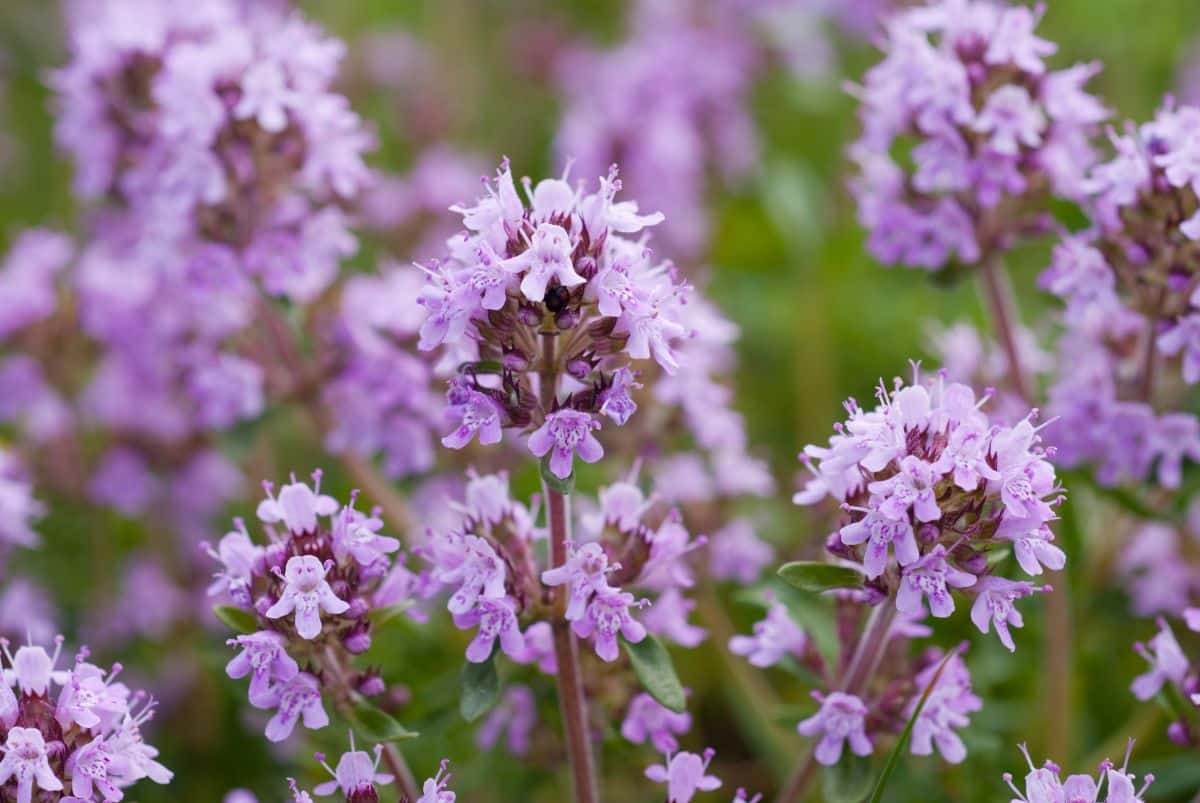
There are different types of thyme that you can eat, but the most commonly used one is the common thyme. It requires full sun and doesn’t need much water, making it perfect for drier gardens. It can grow in Zones 5 to 9 and can be planted through nursery starts or cuttings. Common thyme is also cold hardy and produces lovely pink, white, or red flowers during spring and summer. You can grow it in small pots or inground beds, and it pairs well with other woody-stemmed herbs such as lavender and rosemary. For a more vibrant garden, try growing thyme varieties with variegated leaves! Additionally, another great plant to grow in your garden is the radish. Its scientific name is Raphanus sativus.
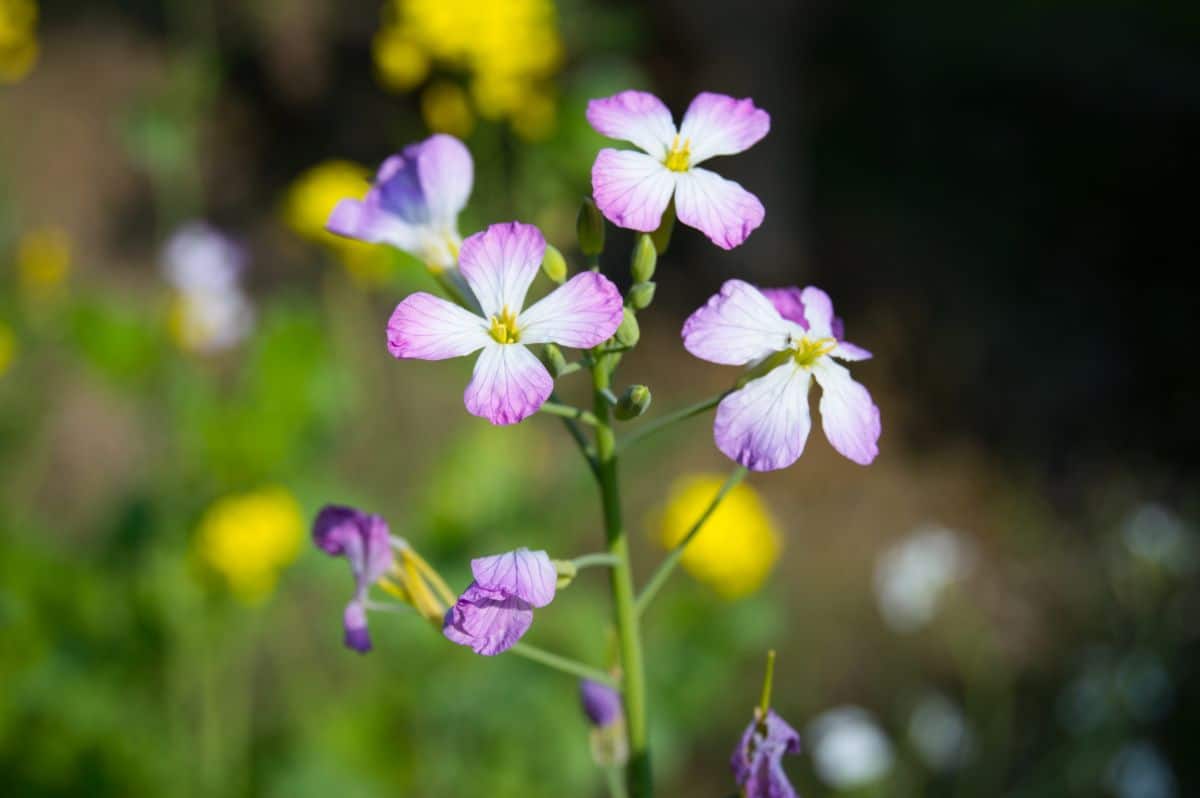
In case your summer radishes start to bolt, don’t worry because you can still make use of their flowers by eating them! Radishes require full sun and moderate watering to grow, typically planted through seeds in Zones 2 to 11. Although radishes are generally cultivated for their roots, their delicate white, pink, or purple flowers can also be used as a garnish or flavoring agent. While flowering usually happens accidentally, it’s possible to intentionally plant radish seeds for both roots and flowers. If you want early blooms, choose fast-growing types like ‘Easter Egg’ radishes. Additionally, radish flowers are more likely to appear in the summertime when the heat causes the radishes to bolt. Lastly, mint (Mentha spp.) is also a great addition to any garden!
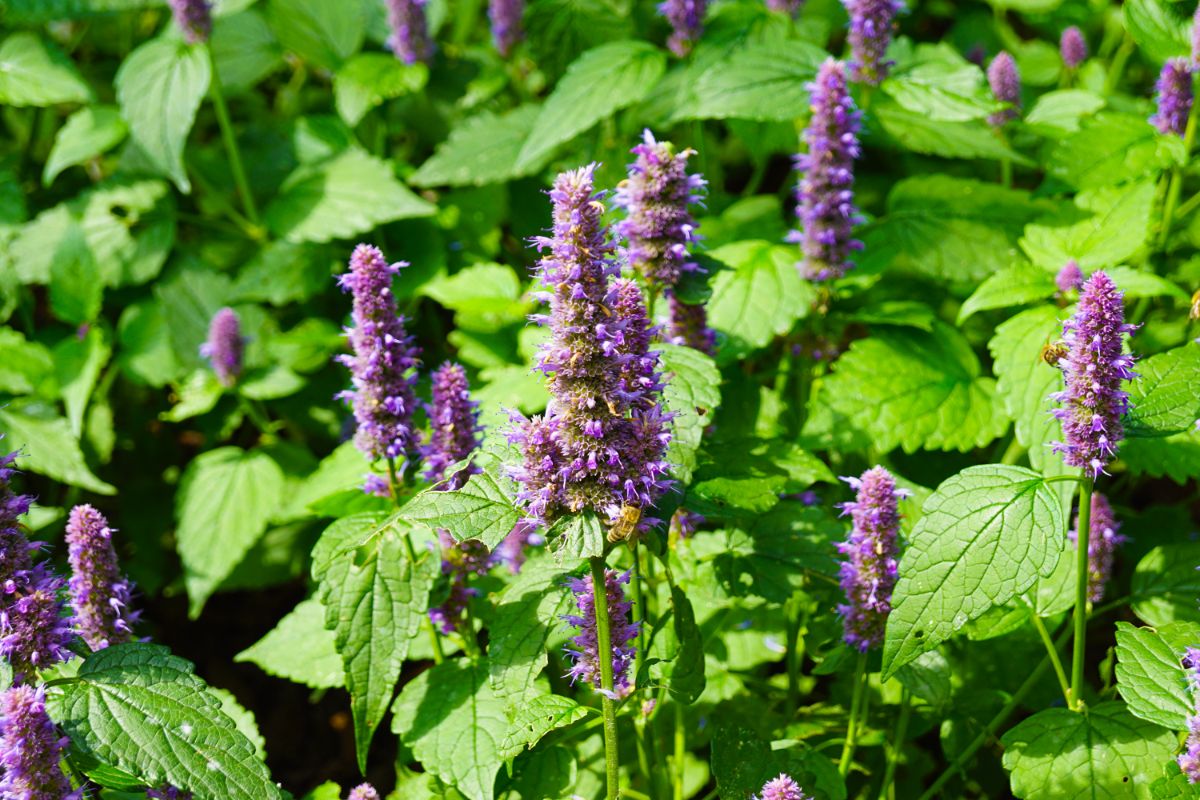
Mint is an incredible flower that not only serves as a delectable treat for humans but also attracts pollinators. This perennial herb flowers in small shades of pink, purple, or white throughout the warmer months and requires minimal effort to grow. Mint flowers are some of the easiest edible flowers to grow, with a long bloom time and low maintenance nature. Growing mint for flowers is an excellent idea since it will provide you with plenty of fresh mint for use in desserts, teas, and other dishes.
Aside from being edible, mint flowers attract bees and other pollinators, making them ideal for growing near your vegetables to increase pollination rates. However, bear in mind that mint has a vigorous spreading habit, so it’s best not to plant it directly in your garden. Instead, try growing it in pots spread throughout your landscape to enjoy all the benefits of mint without worrying about it taking over!
Chamomile (Chamaemelum nobile or Matricaria chamomilla) is another great option for those looking to add edible flowers to their gardens.
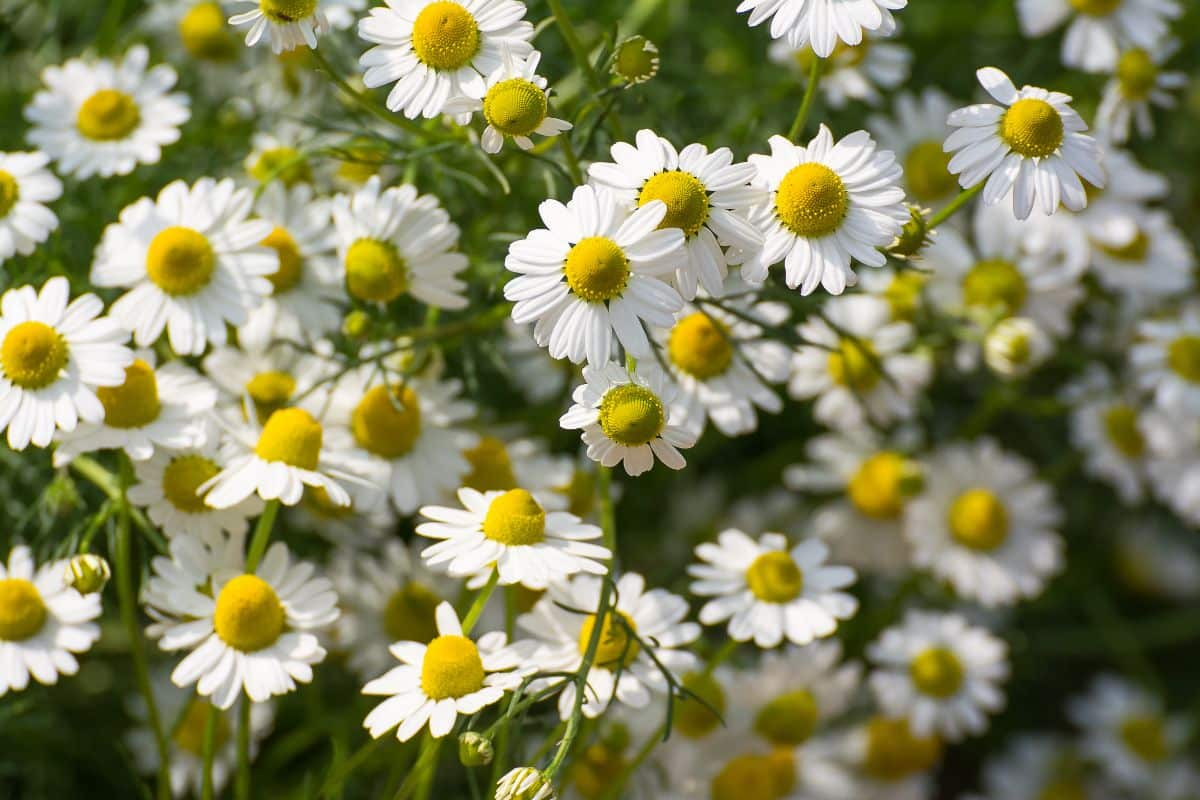
The versatile chamomile plant has more to offer than just its popular tea. Chamomile thrives in full sun to partial shade and requires moderate to low watering. It is typically grown from seed and can be cultivated in various zones depending on the variety. Roman chamomile, which is an annual, is commonly used as a groundcover due to its low-growing nature. Meanwhile, German chamomile grows taller but only as an annual. Apart from tea, chamomile flowers can be cooked into jellies, baked into desserts, or utilized as decorative garnishes. These plants boast a unique floral fragrance and flavor, and their small daisy-like blooms are undeniably adorable.
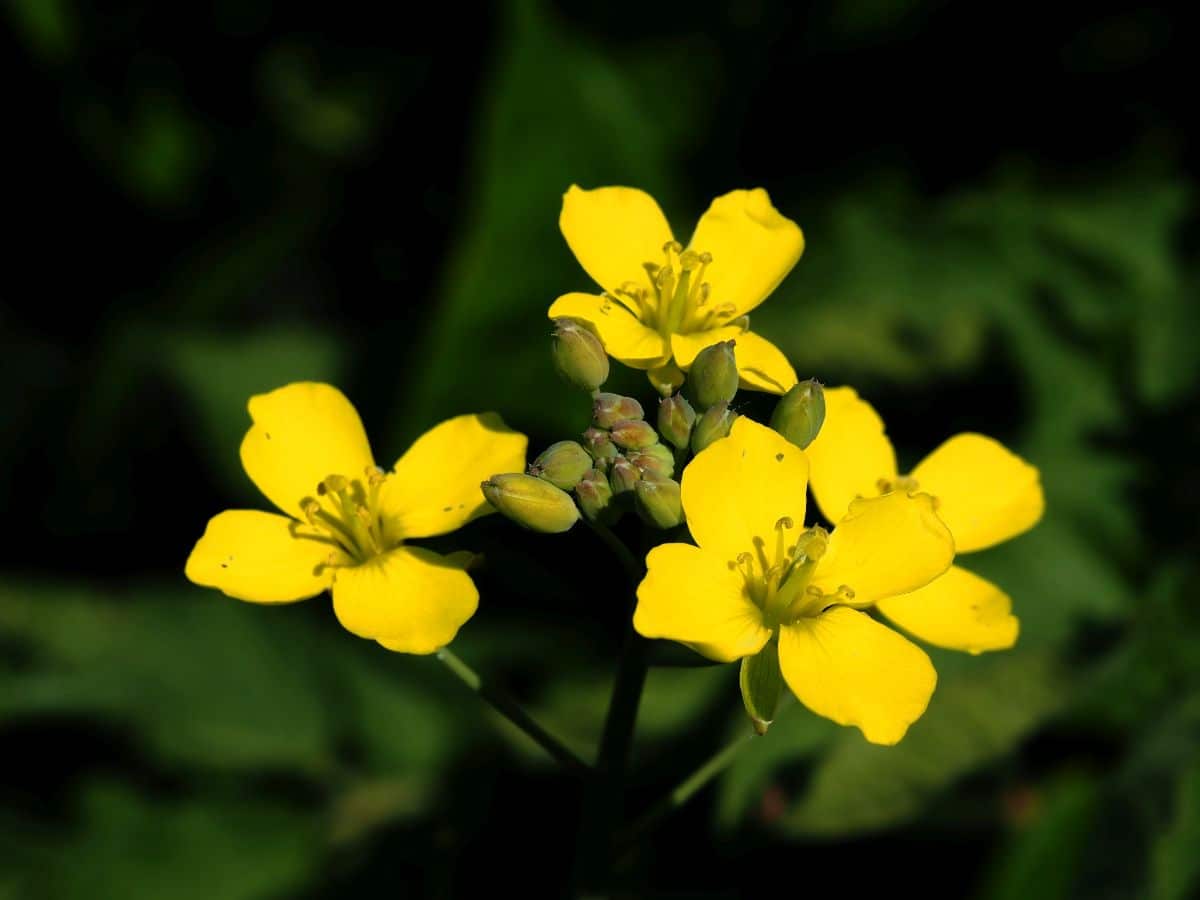
Inject some peppery spice into your salads and other dishes with the addition of arugula flowers. It’s a plant that needs plenty of sunlight and moderate watering, and it’s most commonly grown from seeds. Arugula flowers have a unique, tangy flavor that complements any dish they’re added to, and they grow in zones 3 to 11. Although arugula is typically grown as a cool-weather salad green, you can continue sowing its seeds in the warmer months if you want to harvest its edible flowers. To protect your plants from snow and inclement weather, it’s advisable to use grow tunnels or cloches in cooler climates. Another great plant for your garden is pineapple sage (Salvia elegans), which has a sweet pineapple scent and is an attractive addition to any landscape.
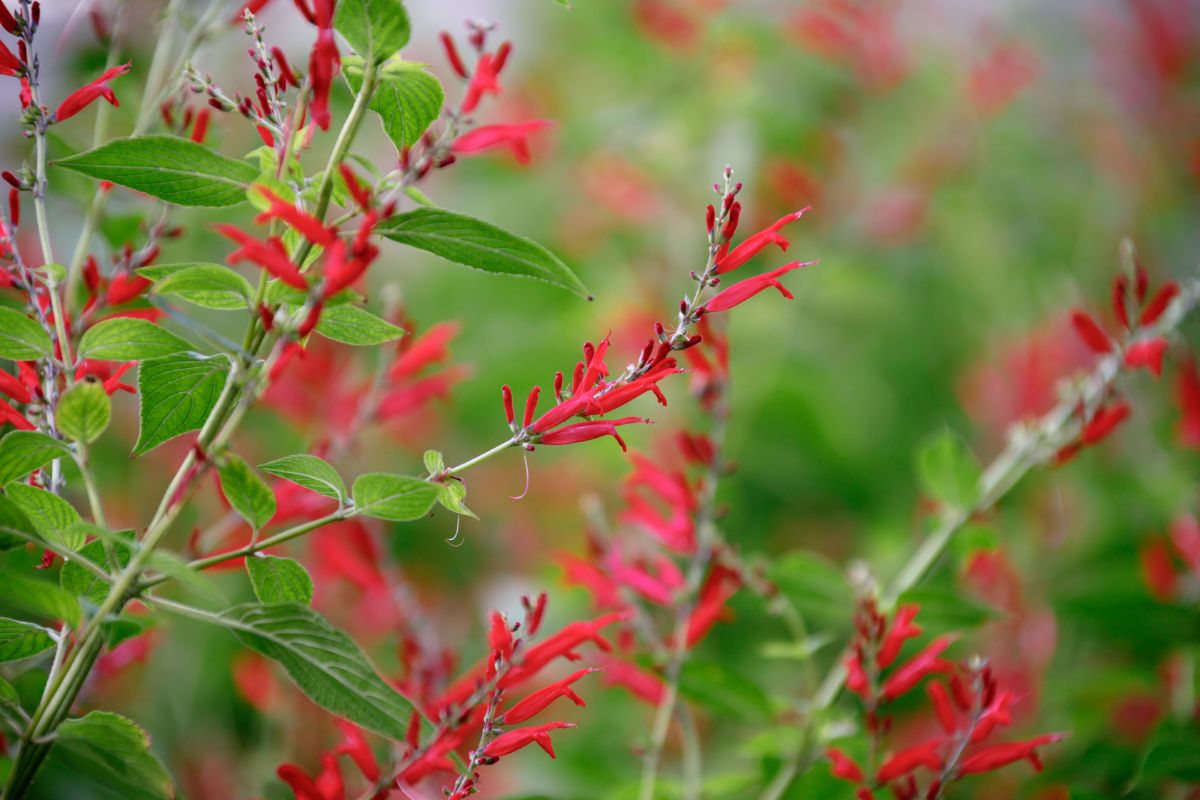
Looking for an unusual herb to add to your garden? Give pineapple sage a try! While it may be a bit harder to find, you can easily purchase seeds online and start growing the plants from scratch. Pineapple sage requires full sun and moderate to low watering, making it a great choice for a variety of gardens. This herb is native to Mexico but can be grown as an annual in cooler climates. Not only are both the leaves and flowers edible, but they also have a fruity flavor with hints of mint. The leaves produce a delightful citrusy aroma when crushed, and the bright red flowers are a favorite among pollinators like hummingbirds and butterflies. So why not add some color and flavor to your garden with pineapple sage?
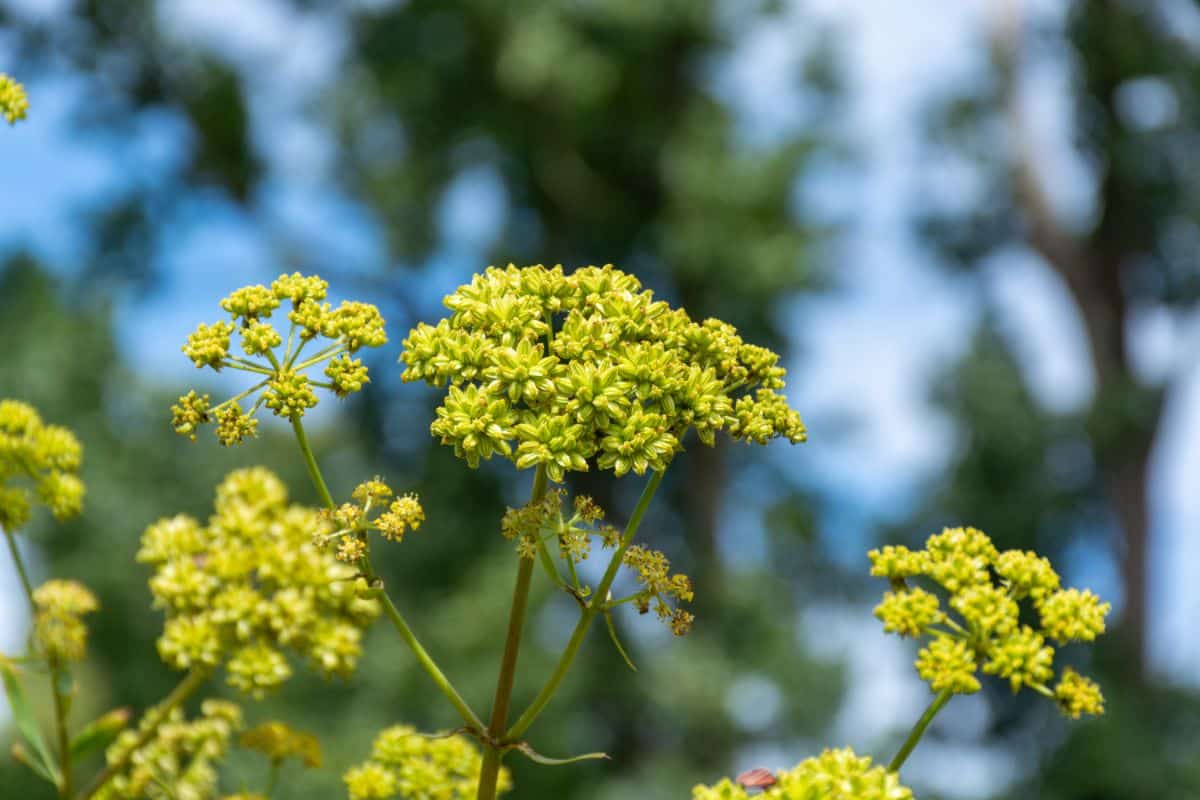
Lovage is a plant that is commonly cultivated for the use of its leaves, but many people are not aware that the flowers of this plant are also edible. It requires moderate watering and can be grown in full sun to part shade. Nursery starts are the most common planting method, and it thrives in zones 3 to 9. Although it may be considered an old-fashioned herb, lovage is making a comeback in many gardens. Belonging to the Umbellifer family, this plant is closely related to carrots and parsley and is known for its celery-like taste. It is much easier to grow than celery and is often used as a substitute. Lovage can overwinter in areas as cold as Zone 3 and can grow up to 6’ tall, making it a popular choice for garden beds or large containers.
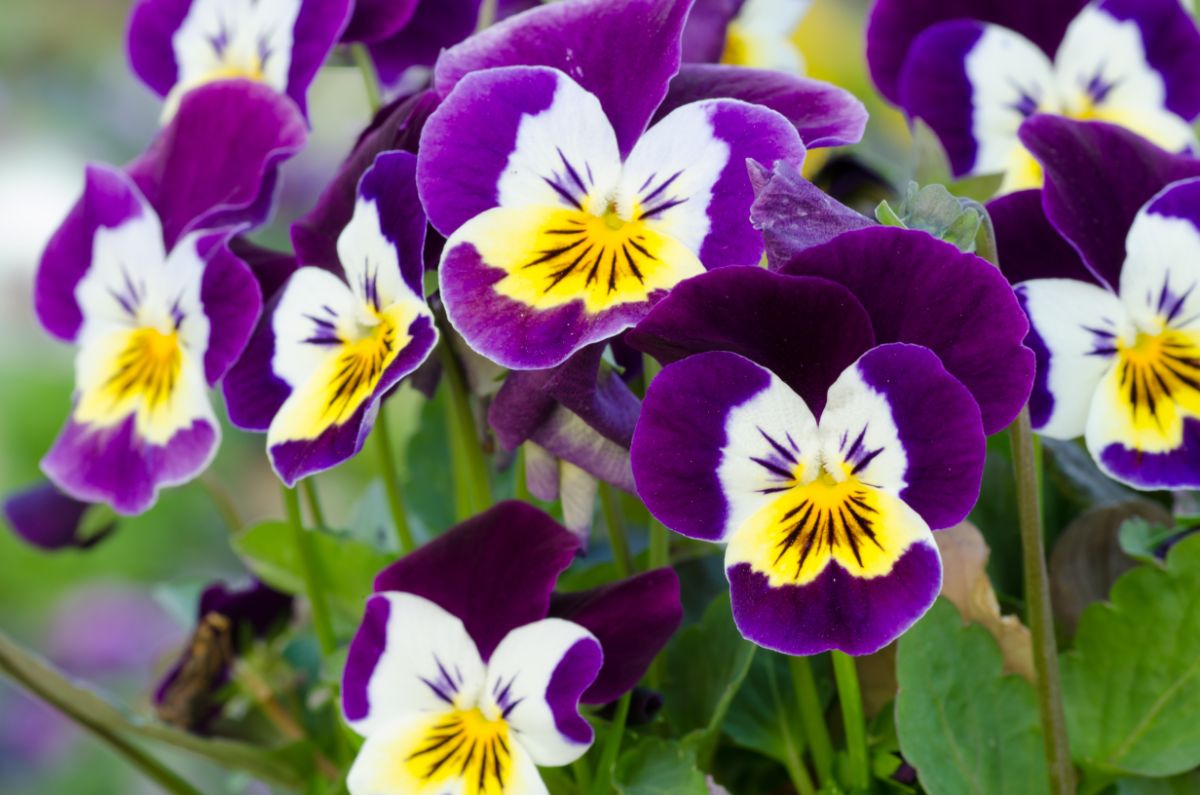
Pansies are a well-known type of edible flower and are closely related to violets. They require full sun to part shade and moderate watering. They can be planted from nursery starts or seeds in zones 3 to 8. Pansies and violas are not only colorful salad toppers but also surprisingly cold hardy. They bloom during cool springs and frosty falls but may stop producing flowers in hot summers. Pansies are easily found at big box stores as ornamentals, or they can be grown from seed and thrive in inground gardens, hanging baskets, or containers. Another edible flower is the dandelion, known by its scientific name Taraxacum officinale.
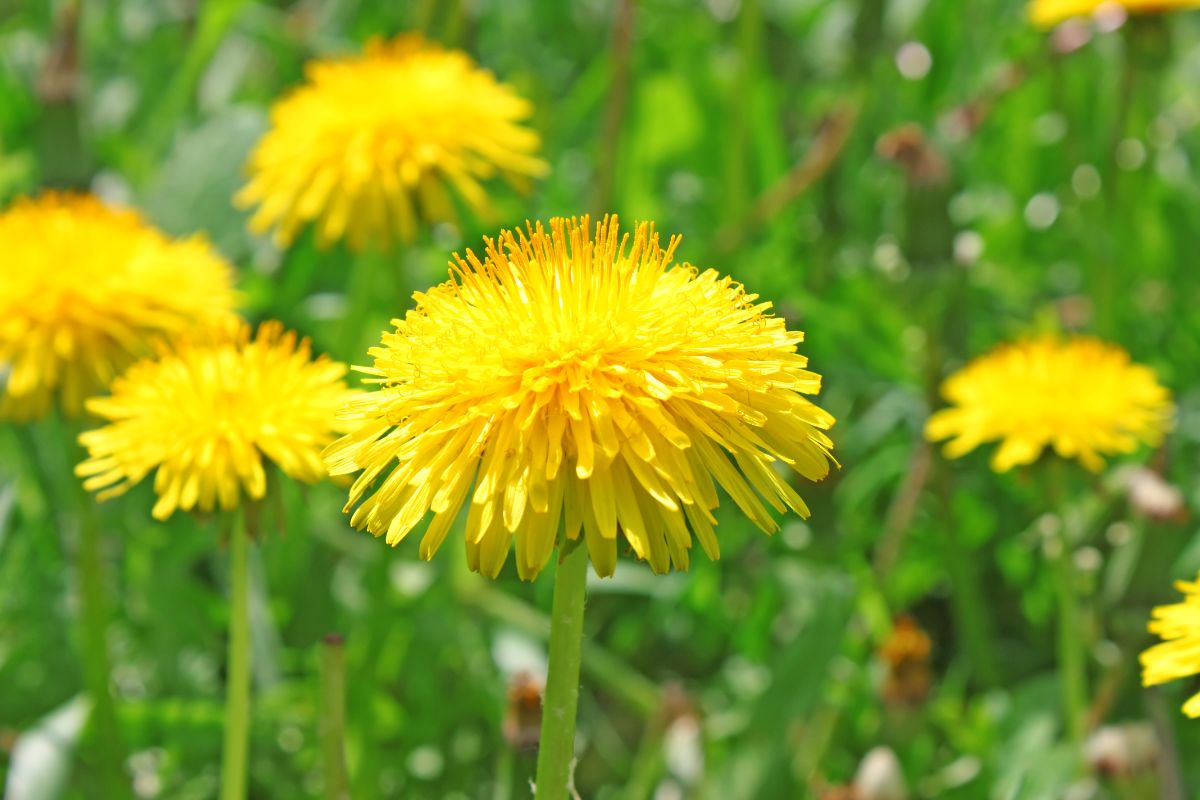
The humble dandelion, commonly known as a weed, is actually gaining popularity for its edible uses. With full sun and moderate watering requirements, dandelions can be grown from seeds or foraged in the wild in zones 3 to 9. Despite its reputation, every part of the dandelion plant is edible, including the leaves and roots. Dandelion flowers are especially sought after for their vibrant yellow color, making them a perfect garnish. However, it’s important to ensure that the dandelions you forage haven’t been exposed to harmful pesticides or herbicides. For those looking to try something new, pink dandelions are a rare and beautiful variety worth exploring.
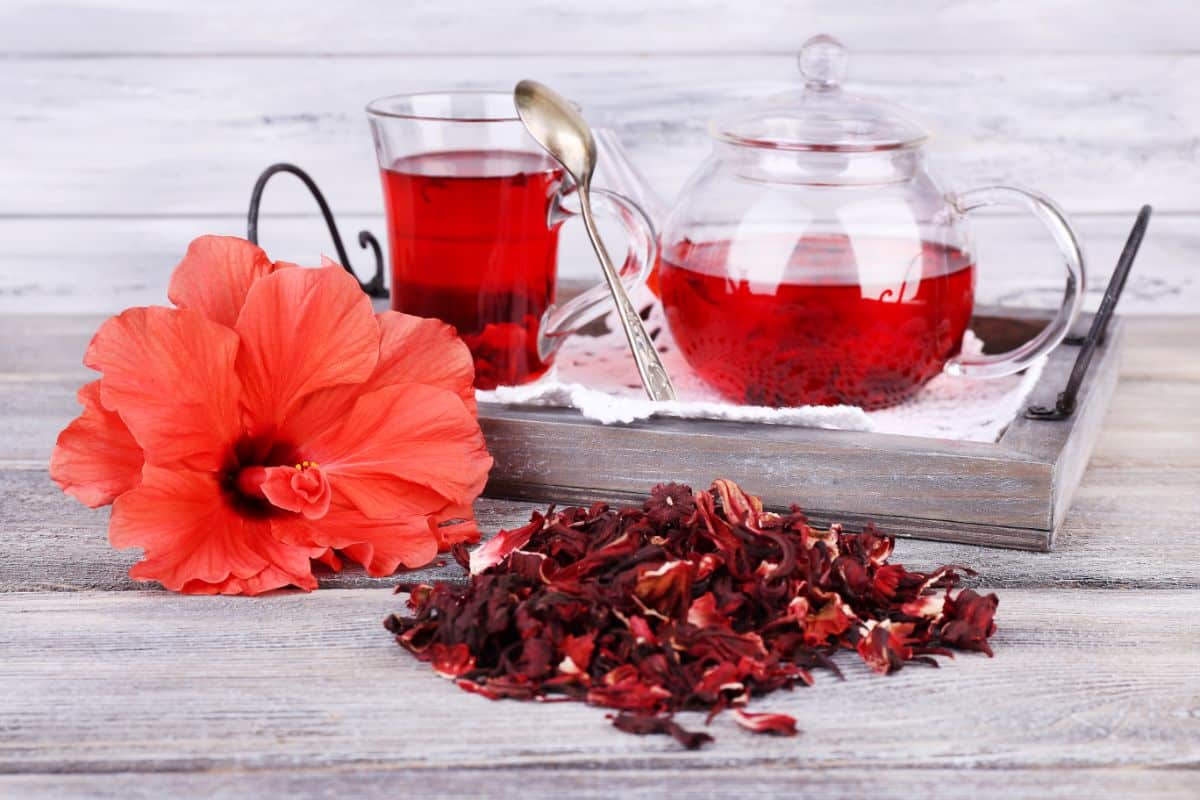
Fun Fact: Did you know that okra, a beloved vegetable in many cuisines, is actually a type of hibiscus? That’s right, and to add to the surprise, the flower of the okra plant is also edible!
If you’re interested in growing hibiscus plants in your garden, they prefer full sun to part shade and moderate watering. Nursery starts are the most common planting method, and the growing zone depends on the specific variety. With hundreds of different species to choose from, home gardeners can easily find the perfect hibiscus varieties to suit their garden space. While most hibiscus plants are grown as ornamentals, there are a few edible ones, such as the Rose of Sharon and the cranberry hibiscus.
Hibiscus flowers can be used in a variety of ways, including desserts, jams, and jellies. However, they are most commonly brewed into hot and cold teas. Hibiscus plants can grow quite tall, but dwarf varieties are available for those looking to plant them in containers.
Another popular plant that gardeners love is marigolds. With their bright colors and hardiness, these plants are a great addition to any garden.
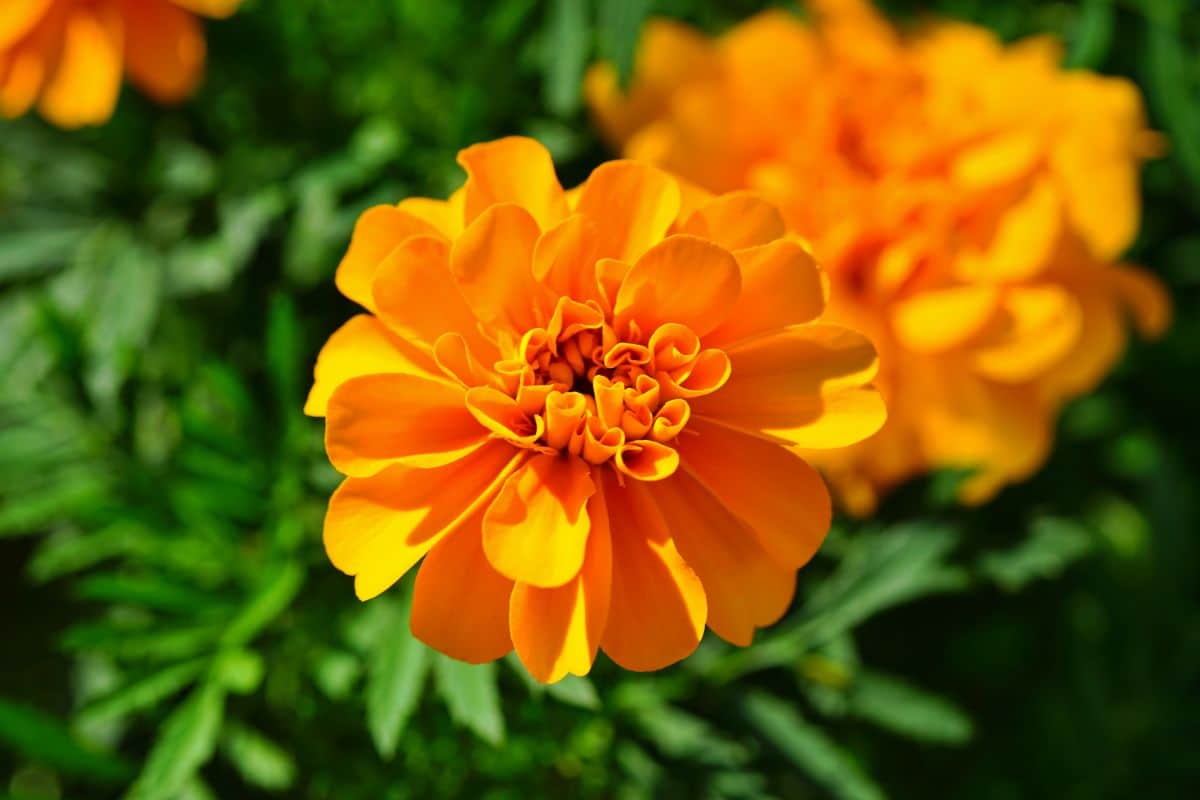
Did you know that marigolds are more than just pretty flowers to plant in your garden? These vibrant plants require full sun and moderate watering, and can be grown from seed or nursery starts in zones 2-11. While marigolds are best known for their colorful blooms in shades of red, orange, and yellow, they also have edible leaves and flowers that can be used in both sweet and savory dishes.
Beyond their culinary potential, marigolds also make excellent companion plants for most vegetables. They attract beneficial insects that can increase pollination rates and keep pests at bay. What’s more, marigolds are hardy and adaptable, making them a versatile choice for any garden – whether you plant them in the ground, in hanging baskets, or in pots. So why not add some sunny marigolds to your garden this season?
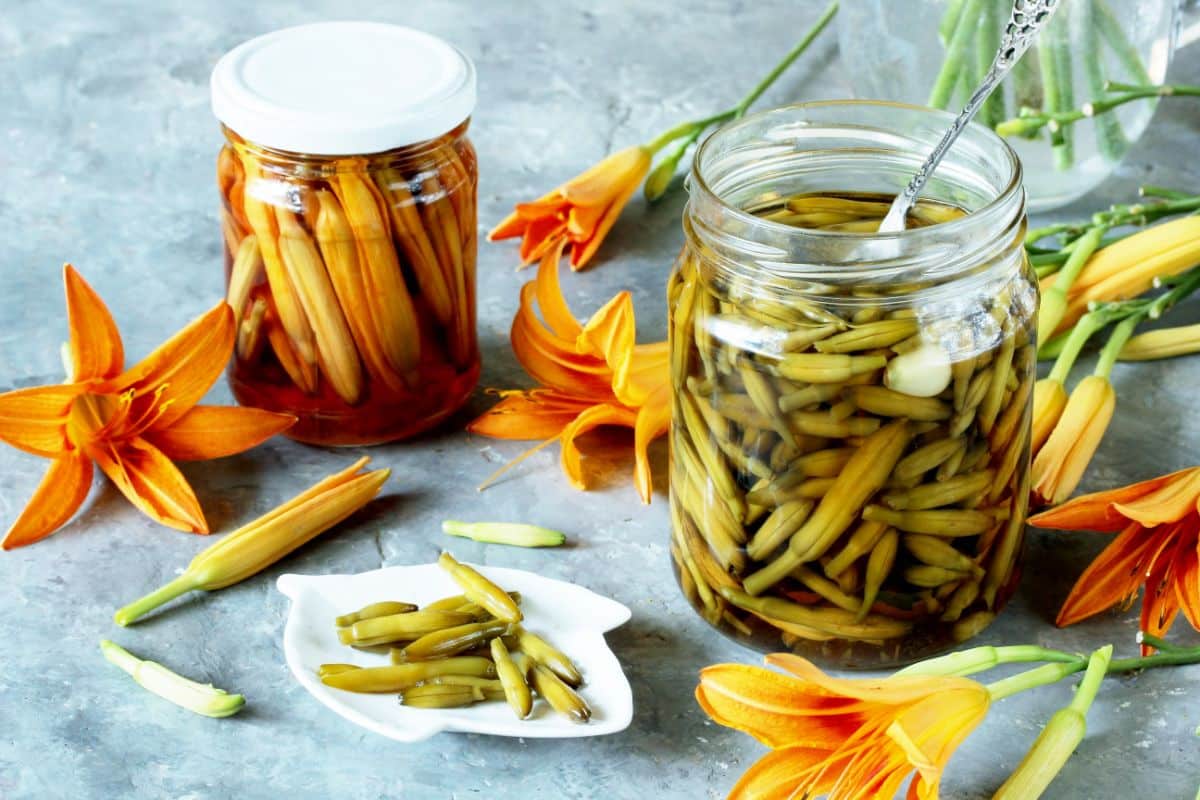
Daylilies are not only simple to cultivate, but they are also a delectable addition to any dish!
Plant Name: Daylilies
Sunlight Requirements: Full sun to partial shade
Water Needs: Moderate
Most Common Method of Planting: Nursery starts or plant division
Growing Zone: Between zones 2 and 11
Despite their moniker, daylilies do not belong to the lily family but instead hail from a different plant family altogether. Originating in Asia, these flowers were brought to the US in the 1700s and have since been a favorite among gardeners. Interestingly, daylilies are fully edible. The young petals and buds add a delightful and unique flavor to any culinary creation.
While most edible plants serve as mere garnishes, daylilies are so appetizing that many growers purposely cultivate them as food crops. Daylilies can be enjoyed fresh or dried and possess a rich, green taste reminiscent of both asparagus and garden peas.
21. Red Clover (Trifolium pratense)

Discover the incredible versatility of red clover’s flowering heads. Red clover is a plant that thrives in full sun to part shade with moderate to low water requirements. It is commonly planted from seed and foraged. Although it is sometimes considered a weed, it makes a perfect alternative to grass, and its beautiful pinkish-purple blooms add charm to any herb garden. Red clover typically blooms during spring, but it can continue into the summer season. Pollinators such as bees are attracted to red clover during its blooming period.
While red clover is often used in teas and preserves, its flower petals can also be used in creative ways like steeping them into cocktails, baking them into pastries, and more. To ensure that you are using pesticide-free clovers, be sure to harvest them from areas free from herbicides. Remember to leave a few blooms behind for the bees!
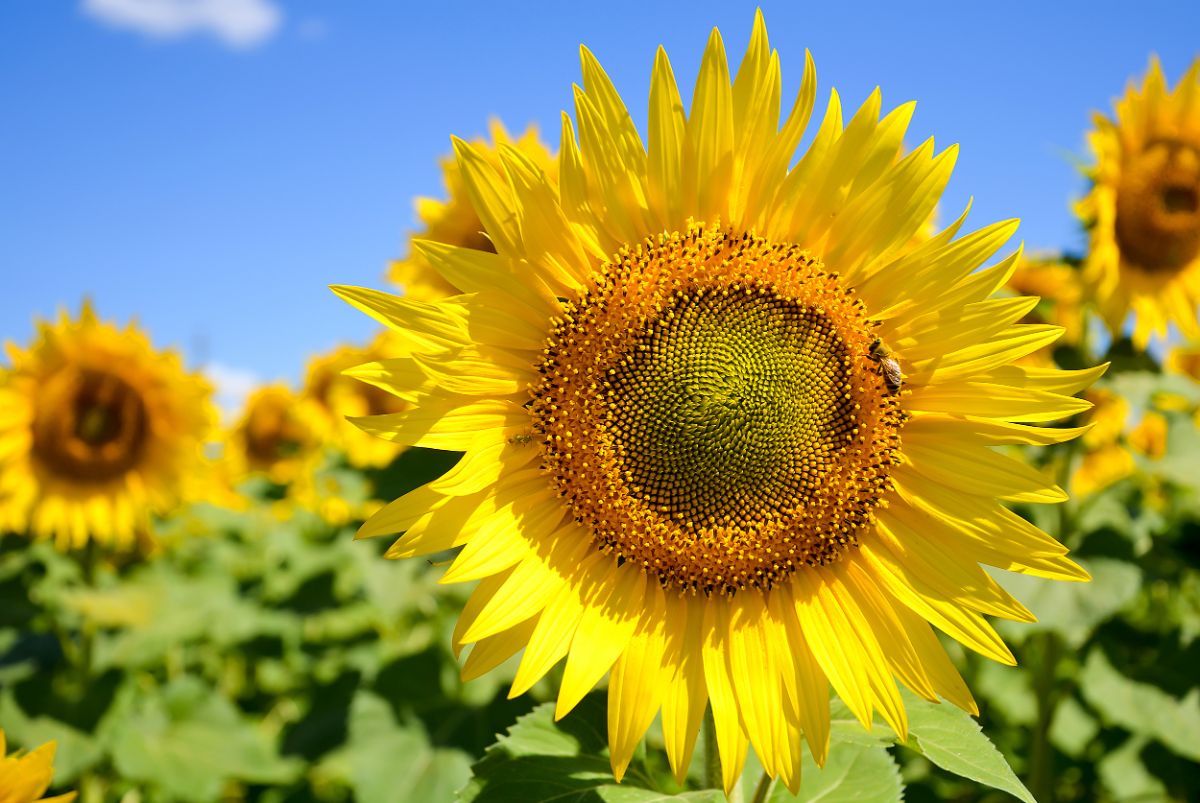
Sunflowers have more edible parts than just their seeds, making them a versatile plant. They require full sun and moderate watering, and are commonly grown from seeds in planting zones 4 to 9. While known for their bright petals and large flower heads, sunflowers can also be enjoyed as a tasty garden treat. To get the best flavor and texture, it’s recommended to harvest the entire head before the seeds harden. With countless varieties to choose from, including tall mammoth sunflowers and dwarf varieties perfect for pots, there’s a sunflower for every garden. Plus, you can find sunflowers in various colors such as golden yellow, maroon, and chocolate brown.
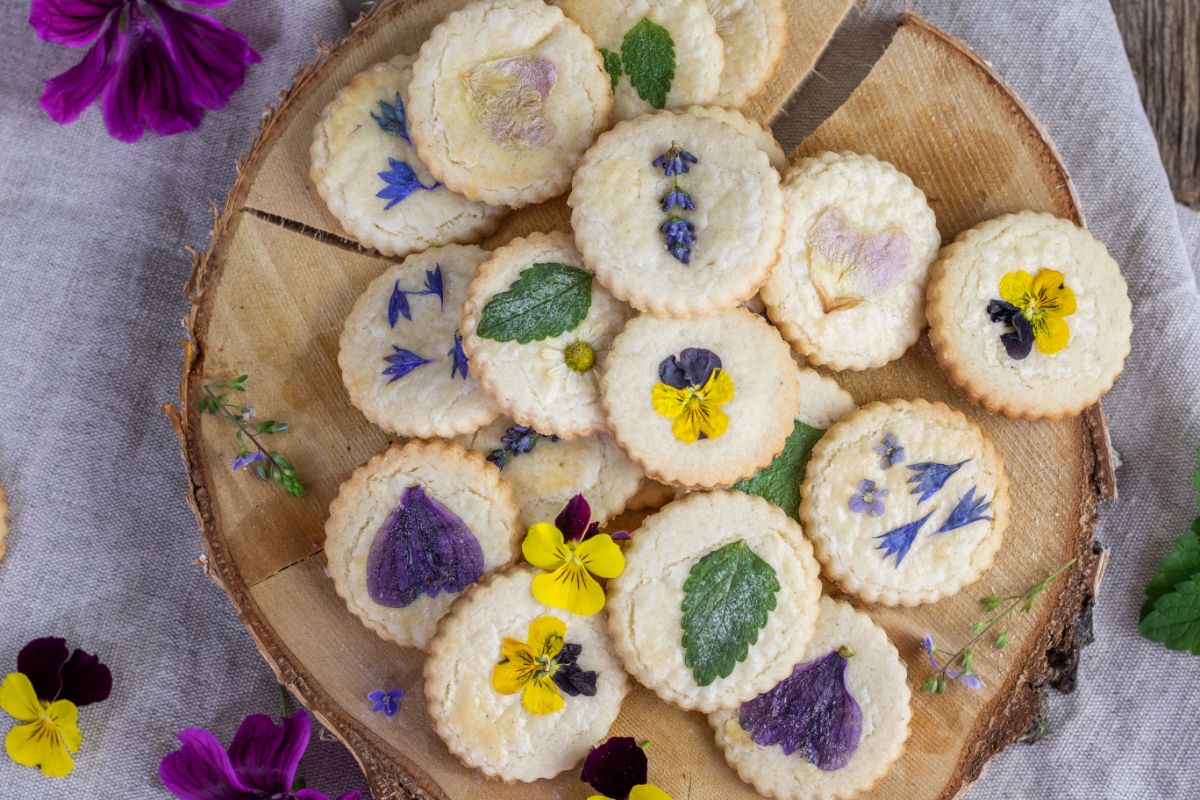
Edible flowers are a great way to add color and visual appeal to your meals. The saffron crocus is the most expensive edible flower, while broccoli is the most commonly consumed (even though it’s not often thought of as a flower). Honeysuckle is known for its sweet taste and is one of the few edible flowers with a sugary flavor.
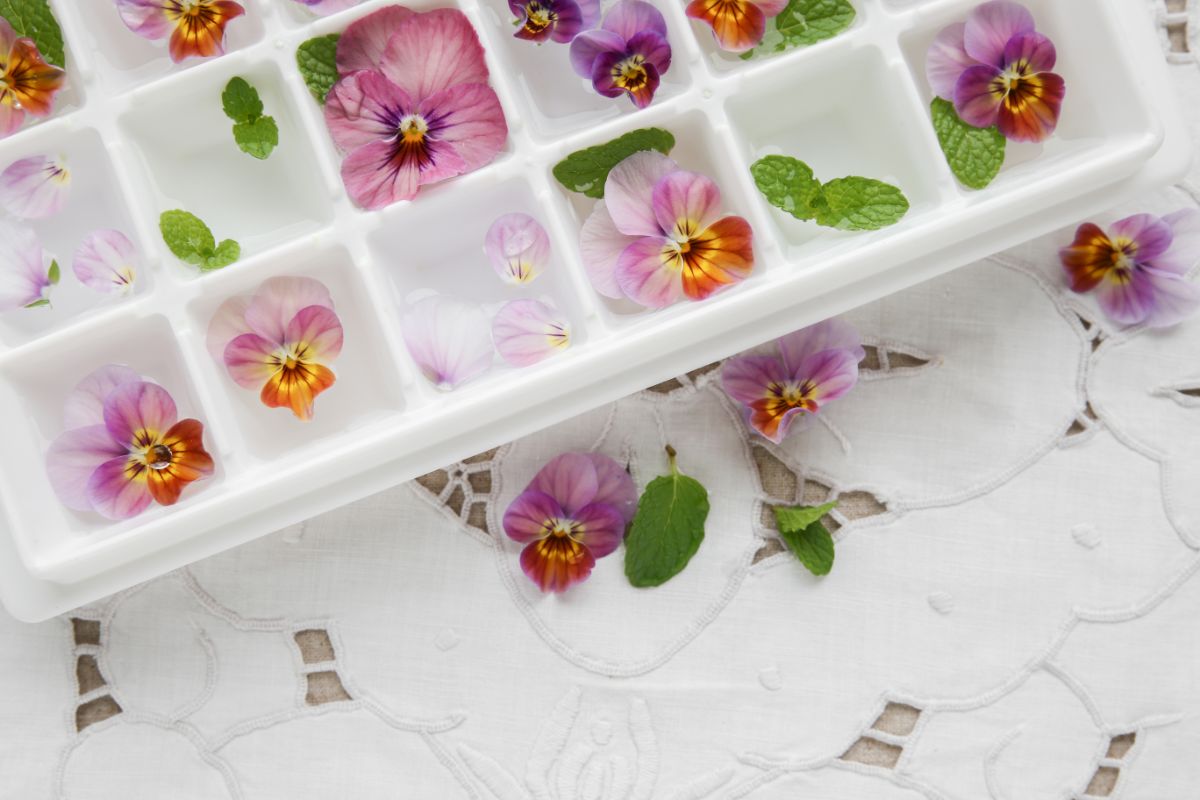
Using ice cubes with pressed flowers is a delightful way to add some color to your summer drinks. You can easily grow most edible flowers in your garden, whether it be in containers or directly in the ground. Edible flowers can be planted alongside your vegetables, or you can even cultivate them in a hanging basket on your sunny back porch. Regardless of which type of edible flower you choose to grow, adding these refined decorations will elevate any recipe. Additionally, many edible flowers can also be found growing as “weeds” in our backyard gardens. You can refer to our guide on gathering edible weeds from your garden and collect some of these lovely blooms for free!





